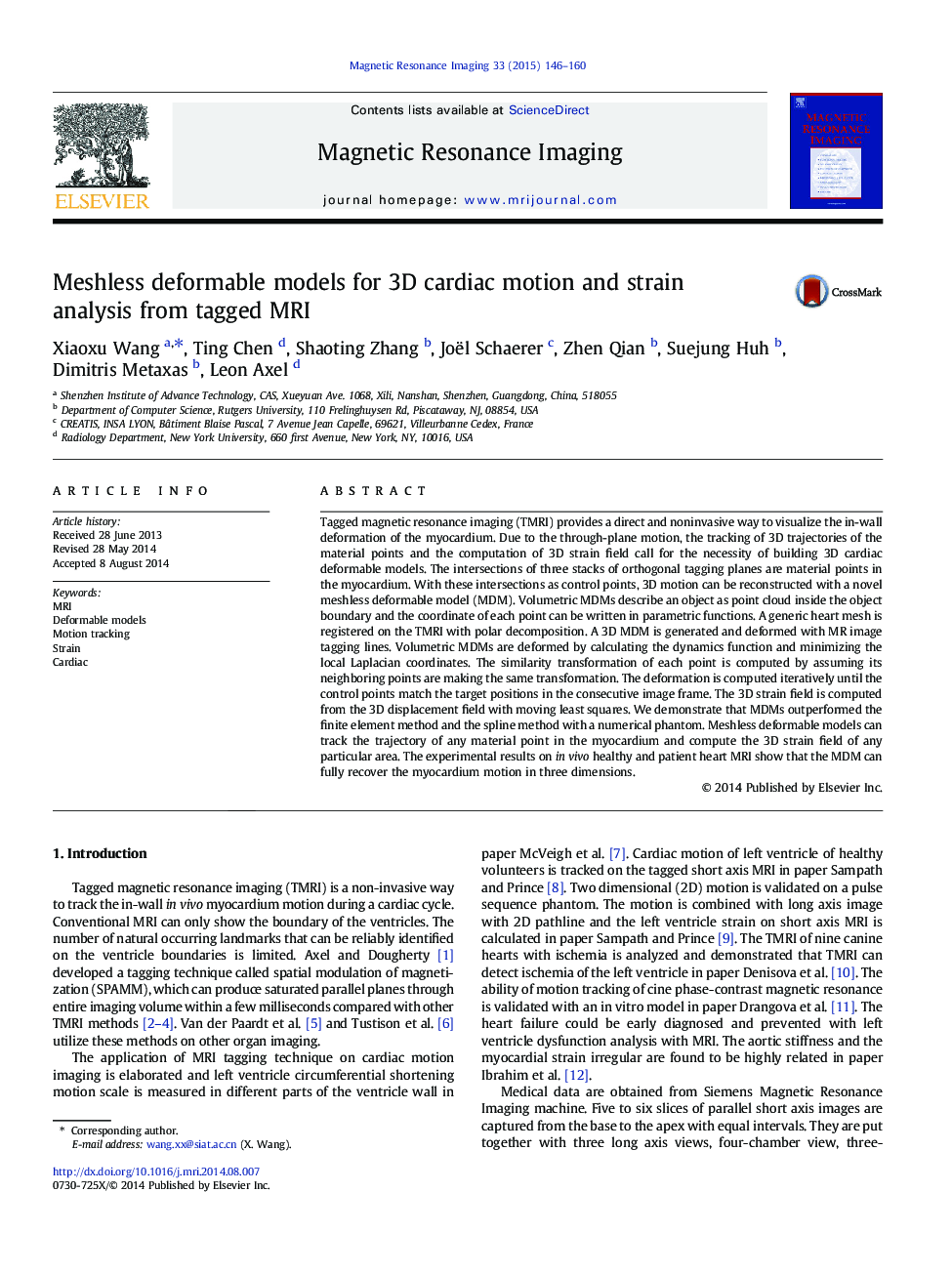| Article ID | Journal | Published Year | Pages | File Type |
|---|---|---|---|---|
| 1806333 | Magnetic Resonance Imaging | 2015 | 15 Pages |
Abstract
Tagged magnetic resonance imaging (TMRI) provides a direct and noninvasive way to visualize the in-wall deformation of the myocardium. Due to the through-plane motion, the tracking of 3D trajectories of the material points and the computation of 3D strain field call for the necessity of building 3D cardiac deformable models. The intersections of three stacks of orthogonal tagging planes are material points in the myocardium. With these intersections as control points, 3D motion can be reconstructed with a novel meshless deformable model (MDM). Volumetric MDMs describe an object as point cloud inside the object boundary and the coordinate of each point can be written in parametric functions. A generic heart mesh is registered on the TMRI with polar decomposition. A 3D MDM is generated and deformed with MR image tagging lines. Volumetric MDMs are deformed by calculating the dynamics function and minimizing the local Laplacian coordinates. The similarity transformation of each point is computed by assuming its neighboring points are making the same transformation. The deformation is computed iteratively until the control points match the target positions in the consecutive image frame. The 3D strain field is computed from the 3D displacement field with moving least squares. We demonstrate that MDMs outperformed the finite element method and the spline method with a numerical phantom. Meshless deformable models can track the trajectory of any material point in the myocardium and compute the 3D strain field of any particular area. The experimental results on in vivo healthy and patient heart MRI show that the MDM can fully recover the myocardium motion in three dimensions.
Related Topics
Physical Sciences and Engineering
Physics and Astronomy
Condensed Matter Physics
Authors
Xiaoxu Wang, Ting Chen, Shaoting Zhang, Joël Schaerer, Zhen Qian, Suejung Huh, Dimitris Metaxas, Leon Axel,
